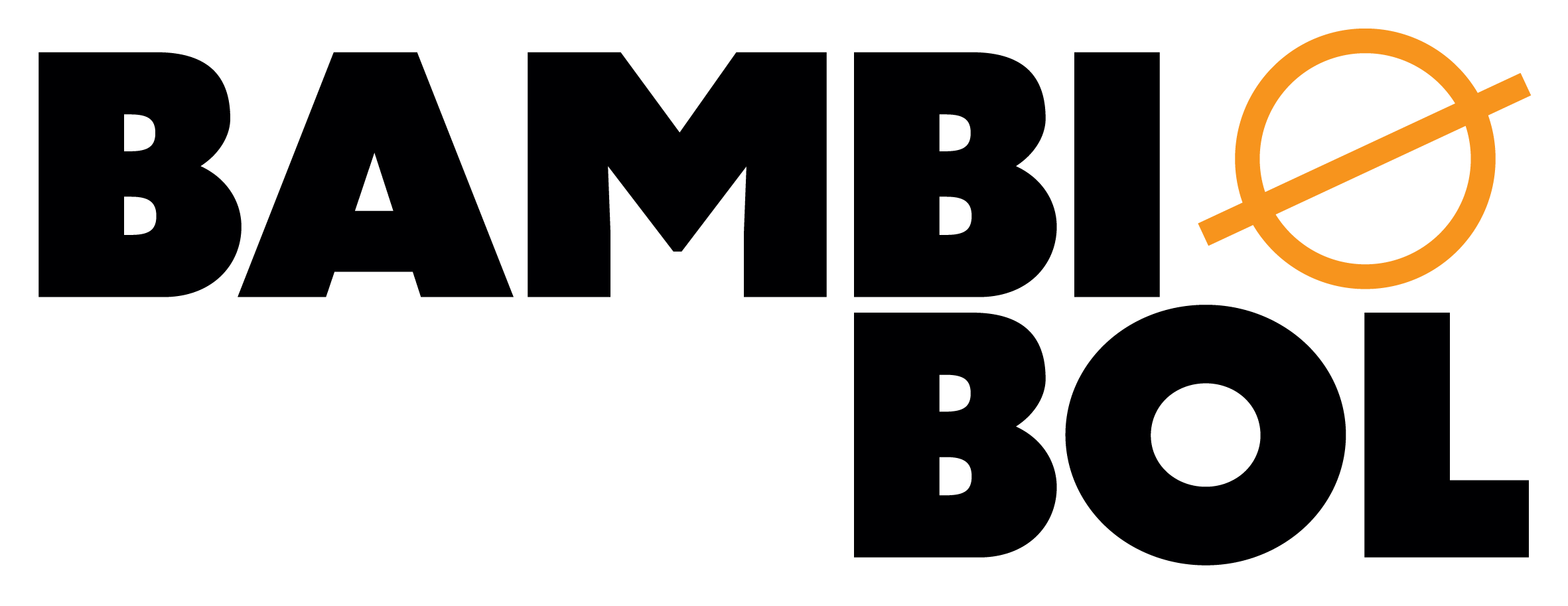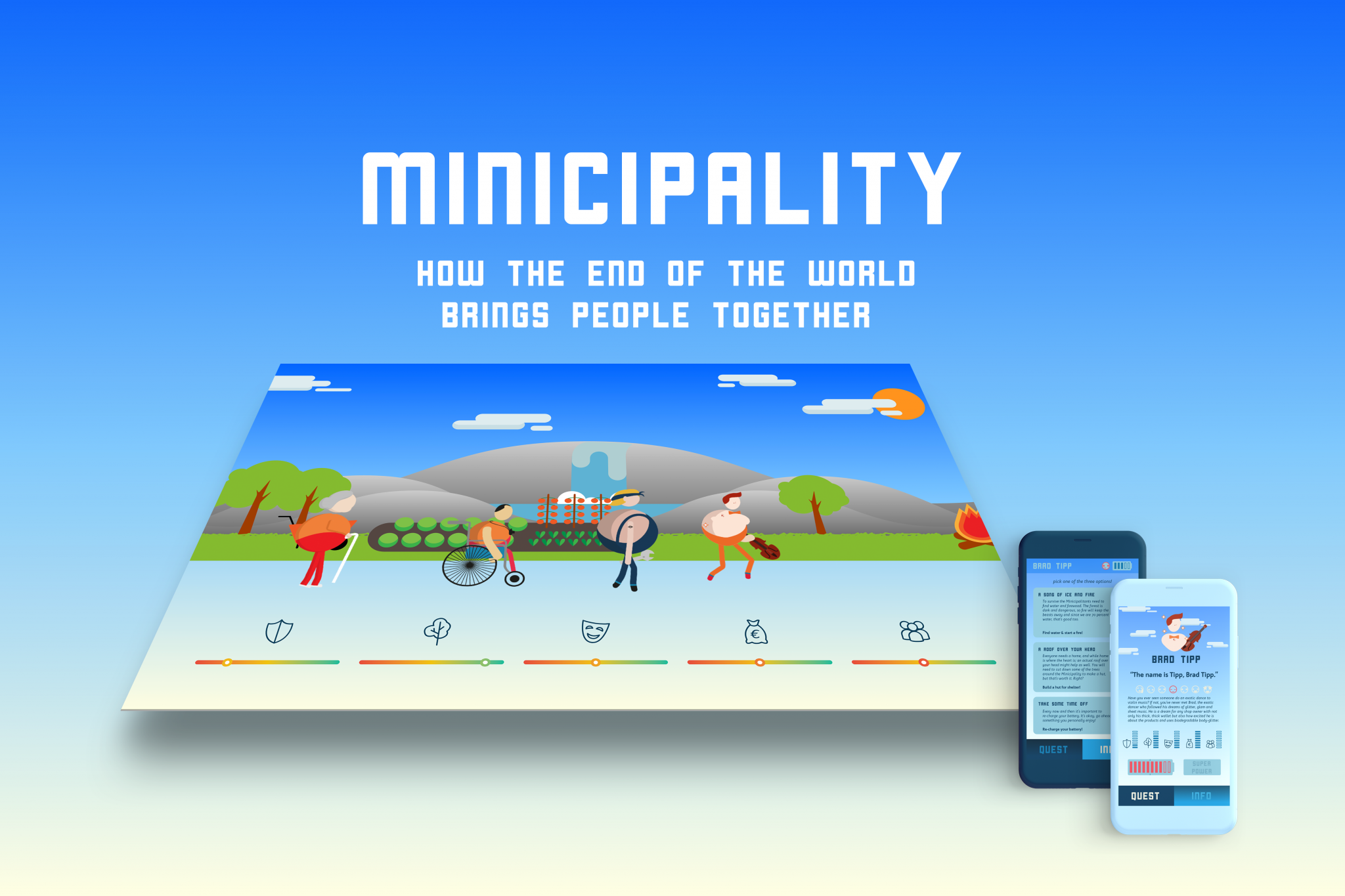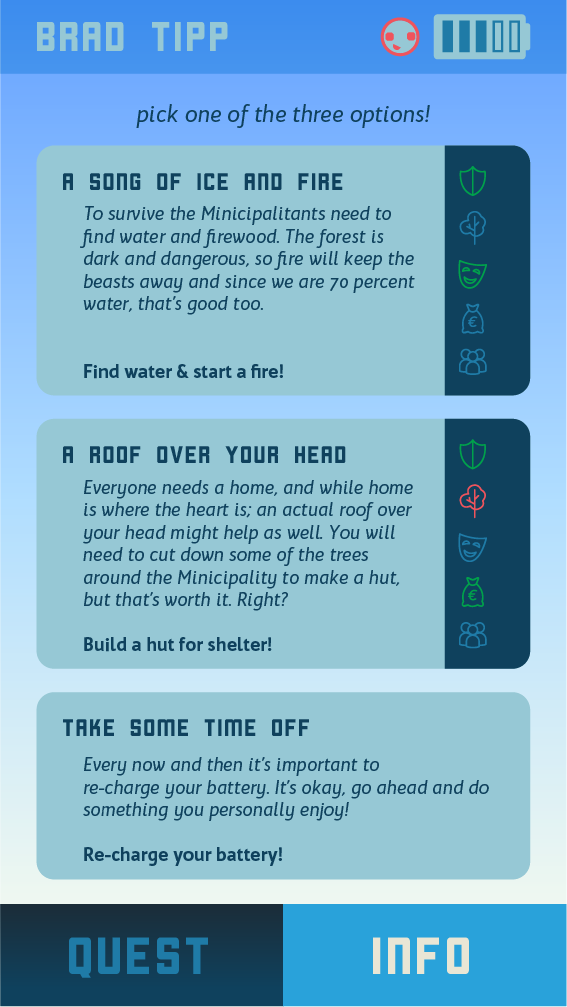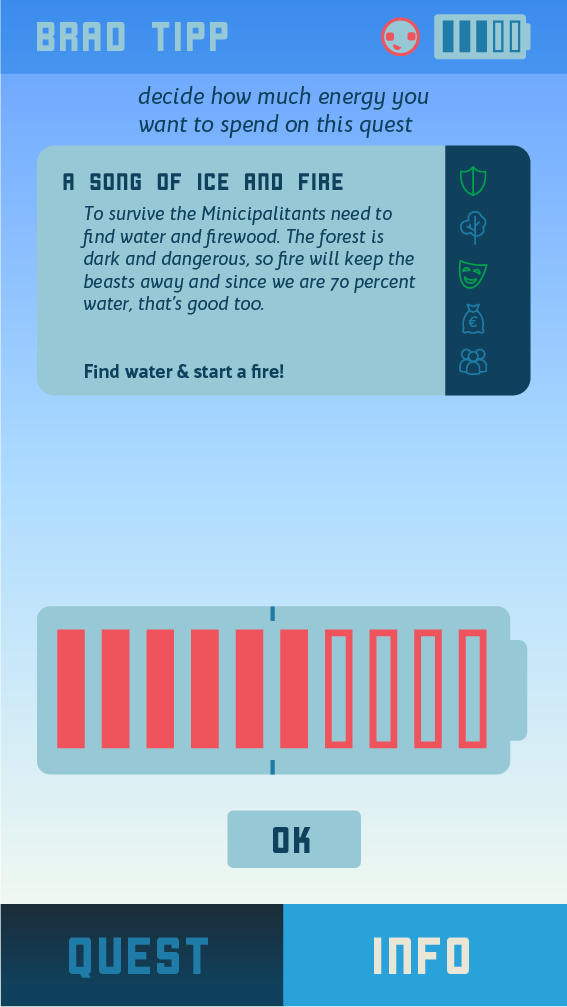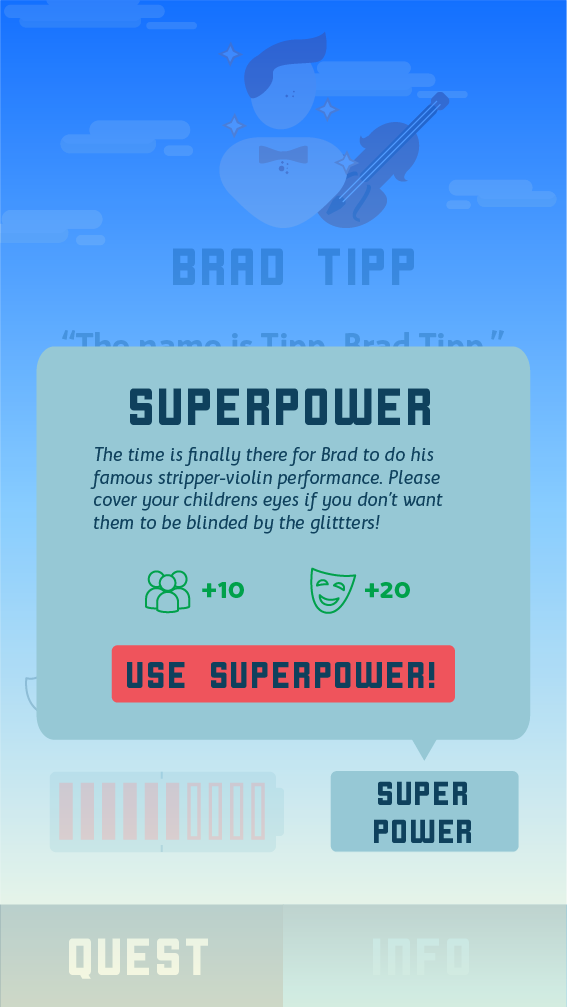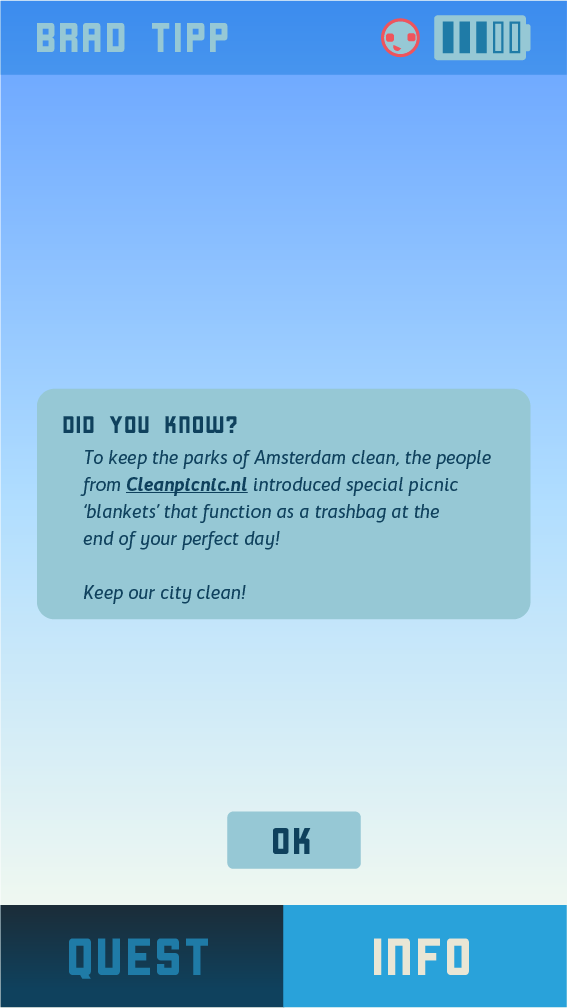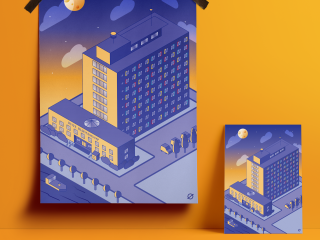Minicipality is a game about empowerment and city making. In the game, the players need to rebuild the city after the apocalypse in 2818.
By completing quests in multiple rounds, the city will be built up again from scratch up to a brighter future. The players get assigned a random character from a list of extreme stereotypes. Each character has their own values and backstory which help the player empathise with them and make choices like their character would. The players can walk in- and out at any given time as the game is based on a walk-in-walk-out concept.
One round involves three options for each player. They either pick one of the two optional quests, or take some time off to recharge their battery. When picking one of the two quests they have to look at their character’s values, their personal values and discuss this with the other players to come to an agreement. Once the players picked their choice, the quest that had the most votes will be executed. Each quest has a certain amount of energy needed to be completed, so it’s up to the players how much energy they want to spend on this quest. Once the amount of energy is reached, the quest will be finished. With various meters the players will get constant feedback on how various categories of the city are doing (safety, nature, happiness, economy & community) and how happy and energised their characters are. The quests they play influence the category-meters, and personal happiness depending on the character’s values.
The City
As seen above is the big screen the players will see. This contains all the currently playing characters in the city, which has different states depending on the level that is being played. Secondly it shows the five main meters of quality in town: safety, nature, happiness, economy and community. All the characters have different thoughts on these pilars which means that they care more about some than others. However, it’s important to keep the overall score above the average, in order for it to be a nice town to live in.
If you’re curious what the different levels look like, you can have a look over here, where you can toggle through levels 1, 5 and 10.


How to play
Apart from the big screen, the players use their phone to control their character. This is an important part because the phone shows the player who their given character is, what their values are and how happy they are. The backstory and values will help the player to make choices during the game, which also happens on the phone screen. Anonymously they can vote for their pick, but of course it’s smart to discuss with the other players what could be the best bet for the whole town. When voting for either of the two choices, the player can also decide how much energy to put into this task. Some tasks may require more energy than others, but they will also have a bigger (positive) impact on the town.
